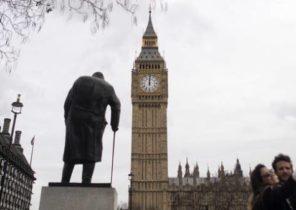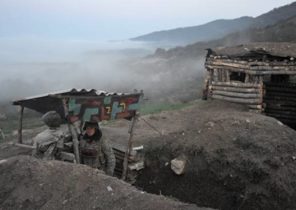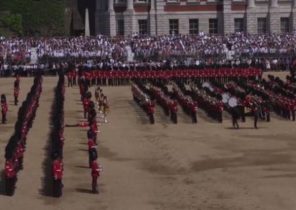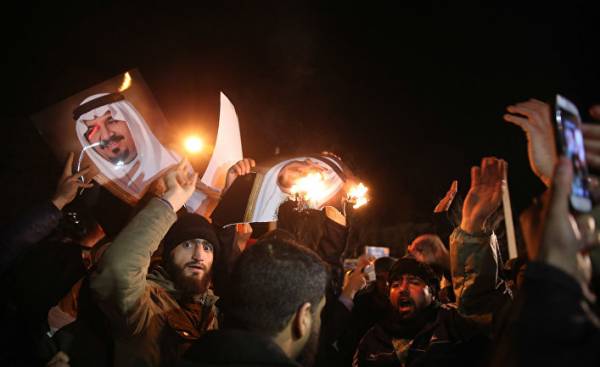
The middle East torn by various conflicts, from bloody wars to secret behind-the-scenes struggle for power.
These conflicts look different, but they have one thing in common: they are all elements of the cold war, the proxy war between the powers Saudi Arabia and Iran.
And now the US and Russia is also being drawn into the struggle.
If to simplify, we can say that the conflict between Iran and Saudi Arabia broke out after the Iranian revolution of 1979, when Iran became a Shiite state. This alarmed Saudi Arabia and the other Sunni Persian Gulf, having oppressed the Shiite minority. No one wanted they also had a revolt of the Shia, like Iran.
After the war in Iraq in 2003, the fall of the regime of Saddam Hussein, the region appeared vacuum. The Saudis felt that this is their chance to join the game to fill the void and to replace Iraq as counterweight to Iran.
The conflict between Iran and Saudi Arabia is seriously deteriorated due to the effects of the Arab spring, which plunged the middle East into chaos, and opened the way for regime change and game on a new level. In Iran and Saudi Arabia ignited the conflict between Sunnis and Shiites — the two branches of Islam, who often live peacefully side by side, but now find themselves embroiled in a struggle for power, land and money.
At times, the confrontation became an open, like that time when Iranian protesters stormed the Saudi Arabian Embassy, or when armed men attacked several sites in Tehran (the Iranian regime accused Saudi Arabia).
But in most cases the conflict has evolved through intermediaries, like the cold war, the Soviet Union and the United States. That is, Saudi Arabia and Iran funding and arming different sides in conflicts across the region.
Syria
What began as a civil war, now turned into a complex battlefield, which faced and struggling for influence such powers like USA, Russia, Turkey, Saudi Arabia and Iran.
 © RIA Novosti, Mikhail Voskresensky | go to photobacteria at the airport of Qamishli
© RIA Novosti, Mikhail Voskresensky | go to photobacteria at the airport of Qamishli
Iran supports the regime of President Bashar al-Assad. He sends in a country thousands of soldiers of its elite units to participate in battles with the opposition. In addition, Iran has helped the paramilitary organization Hezbollah from Lebanon, which is fighting on the side of Assad, as well as funding and arming Shiite and other factions involved in this war.
Saudi Arabia supports the militias, which are dominated by Sunnis, such as the Free army of Syria, and groups associated with “al-Qaeda” (banned in Russia as a terrorist organization — approx. TRANS.), for example, jabhat an-Nusra (banned in Russia as a terrorist organization — approx. TRANS.). When Iran and Russia began to play a more active role in the Syrian war, Saudi Arabia has significantly increased the supply of weapons.
Yemen
Civil war in Yemen — probably the most striking example of the Iranian-Saudi conflict. Tens of thousands of Yemenis were killed in the war, the country has come to famine. It all started with the fact that Shiite rebels, the Houthis, in 2016, captured the capital Sana’a. The Saudis responded with a hail of bombs.
Iran supports the Houthis, who came from the Northern part of Yemen.
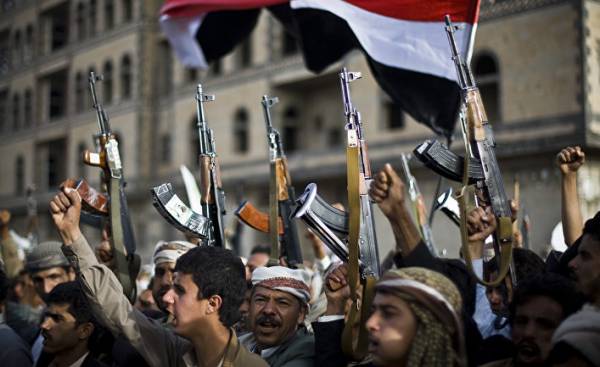 © AP Photo Hani Mohammed, FileДемонстрация Houthis against Saudi air strikes coalition
© AP Photo Hani Mohammed, FileДемонстрация Houthis against Saudi air strikes coalition
Saudi Arabia supports the Sunni former government. Together with the United States and other Sunni States such as Egypt, Sudan and Gulf countries, the Saudis have created a coalition which is fighting with militants during air and ground operations.
Iraq
Shiite militia played an important role in the fight against ISIS (banned in Russia as a terrorist organization — approx. TRANS.) in Iraq. After the liberation of Mosul Iraq in principle “transferred” to neighboring Iran, as was stated in an article in the New York Times. Control of Iraq, a country that was once a bloody war, and now it is ruled by a regime friendly minded towards Iran would be a major victory for Iran in a proxy war with Saudi Arabia. While Iranian support of the troops had reached the southern border of Iraq and Syria that paves the way from Baghdad to Damascus and, in General, to the Mediterranean sea. It will become a springboard for Iran’s growing influence in the region.
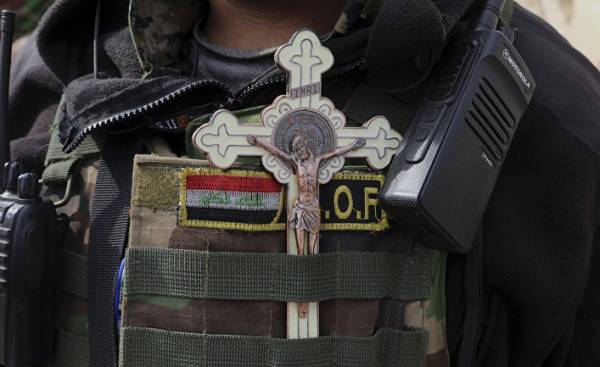 © AP Photo, Khalid MohammedБоец Shiite militia
© AP Photo, Khalid MohammedБоец Shiite militia
The Iraqi government accused Saudi Arabia support ISIS, but officially, the Saudis prefer to Fund Sunni groups to fight Iranian influence.
Iran supports the government, which is dominated by Shiites, as well as allied militias.
Saudi Arabia supports Sunni groups.
Qatar
The neighbors, the Gulf States of Qatar have recently started a blockade against it, claiming that Qatar “supports terrorism.”
However, critics point out that this stigma is rather a punishment for the Sunni Qatar, unlike its neighbors, maintains relations with Iran, which the others considered a betrayal.
Bahrain
70% of the population of Bahrain is Shia, but the country ruled with an iron hand clan of the Sunni Caliph.
During the Arab spring of 2011 in Bahrain too, emerged a revolutionary mood, and as much as 100 thousand people took to the streets to show their discontent. Total population of Bahrain has a population of one million.
The protesters marched under the slogan “Sunni and Shia brothers, our country is not for sale.” They were protesting against the corrupt regime. Saudi Arabia was alarmed because of these commotions in his back yard. The demonstration was portrayed as a revolt of the Shia, and Saudi Arabia were sent to Bahrain thousands of soldiers. Many protesters were arrested, thrown into prison, tortured. Among them were several Swedish citizens.
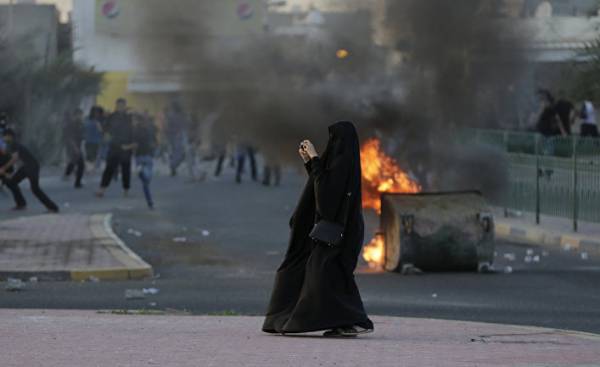 © AP Photo, Hasan JamaliЖительница Bahrain photographs of police officers during anti-government demonstrations in Bahrain. April 2016
© AP Photo, Hasan JamaliЖительница Bahrain photographs of police officers during anti-government demonstrations in Bahrain. April 2016
Iran sided with the demonstrators. The Iranian regime supported the rebellion and withdrew its Ambassador in protest against violence.
Saudi Arabia has supported the government of the Khalifa clan.
And how Russia and the United States?
Indirect war between Iran and Saudi Arabia often compared with the cold war the Soviet Union and the United States in the 70s and 80s. the Comparison has become even more relevant after the current government of America and Russia seem to have chosen sides in the “new” war.
The President of the United States Donald trump recently pointed to Iran as the greatest threat to peace. During his election campaign, he warned that “Iran taking over Yemen. Will Take Over Syria. Capture all”. However, he concluded a massive arms deal with the Saudis and refused to condemn their crimes against human rights.
On the one hand, the war in Syria brought Russia and Iran, which took the side of Bashar al-Assad.
But world politics is often inconsistent. In Yemen and Syria, the world power of the USA is teaming up with Saudi Arabia, but in Iraq, America is fighting against ISIL, standing shoulder to shoulder with the militia, which supports Iran.

